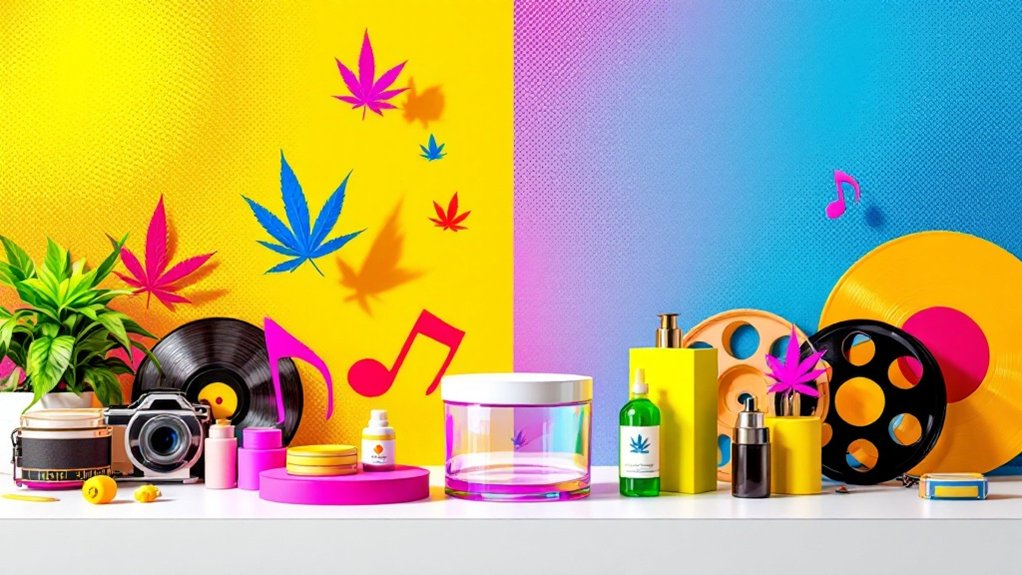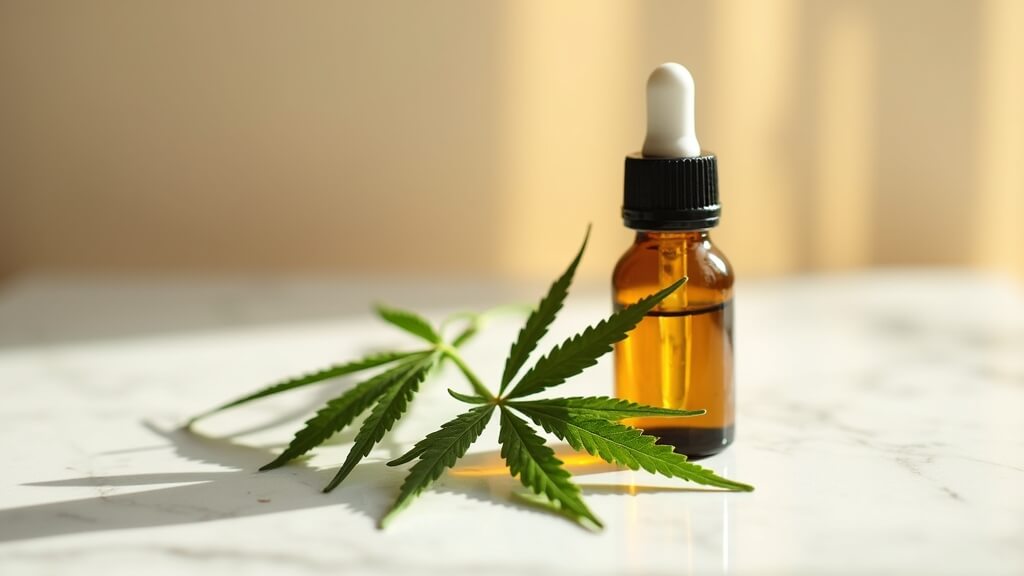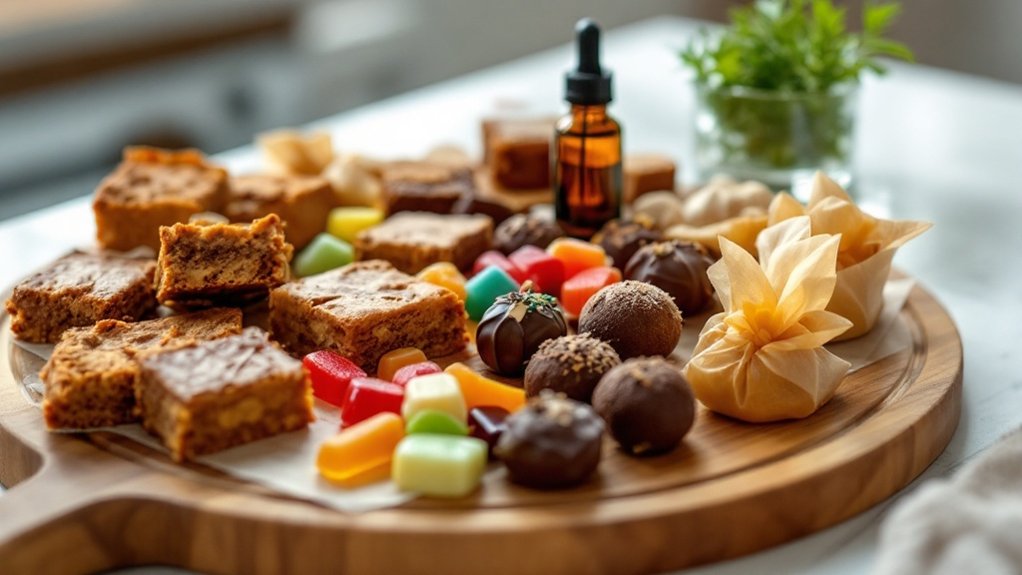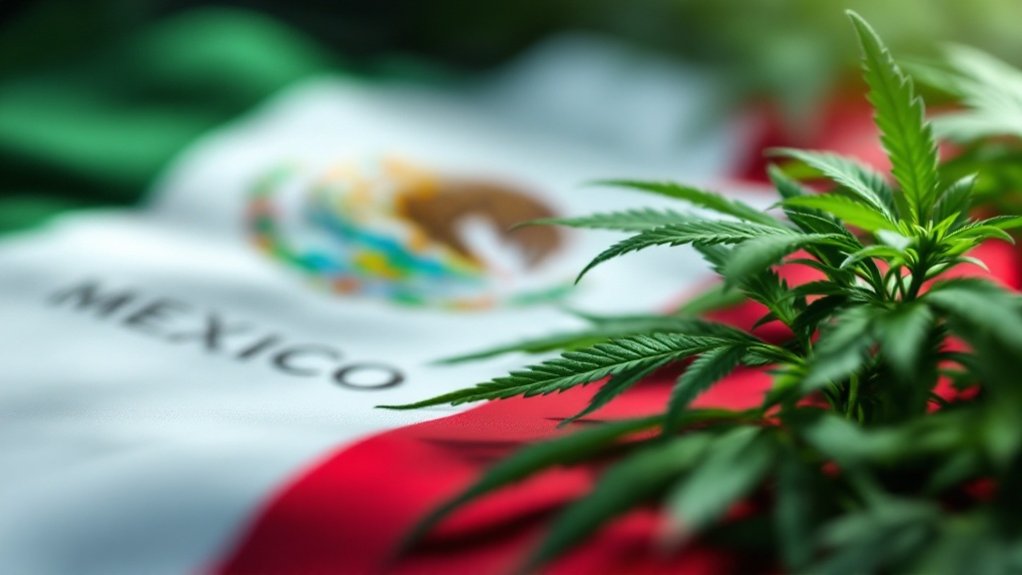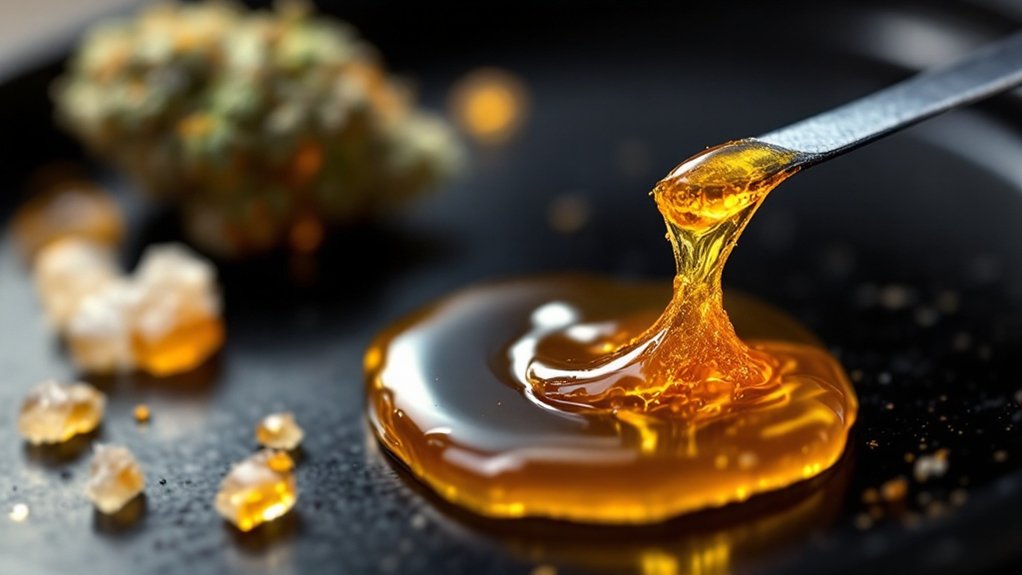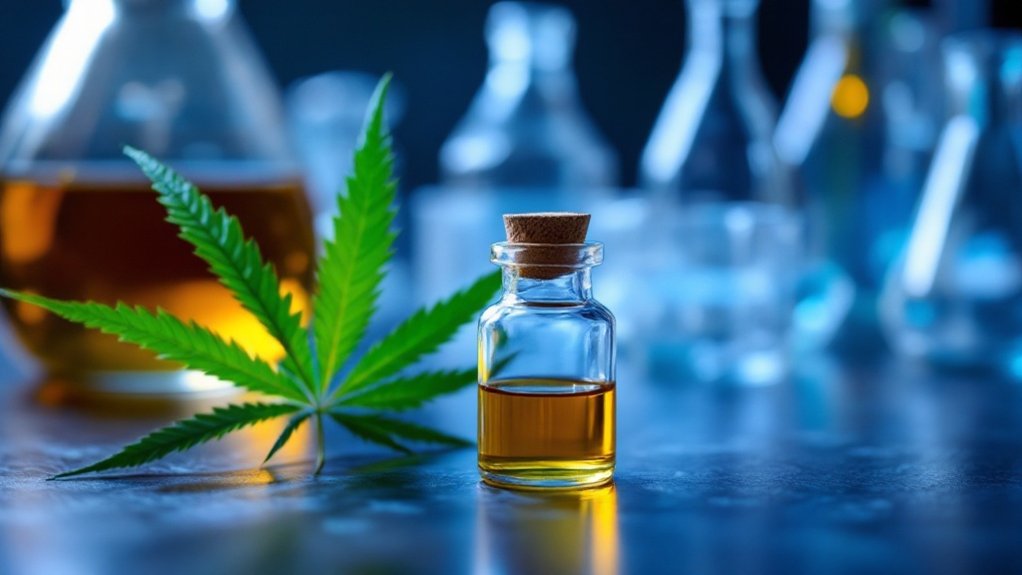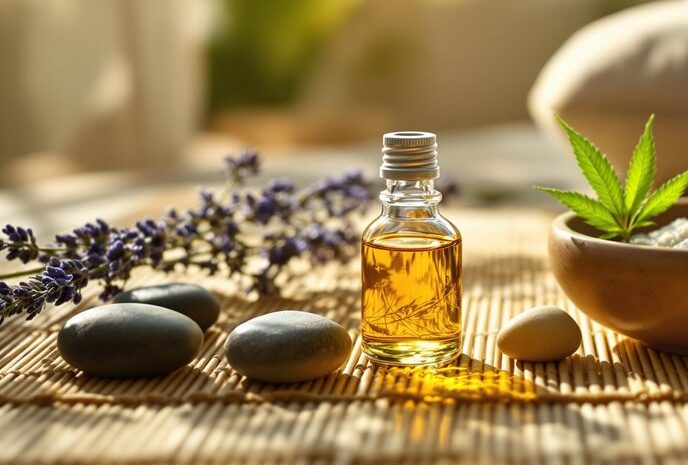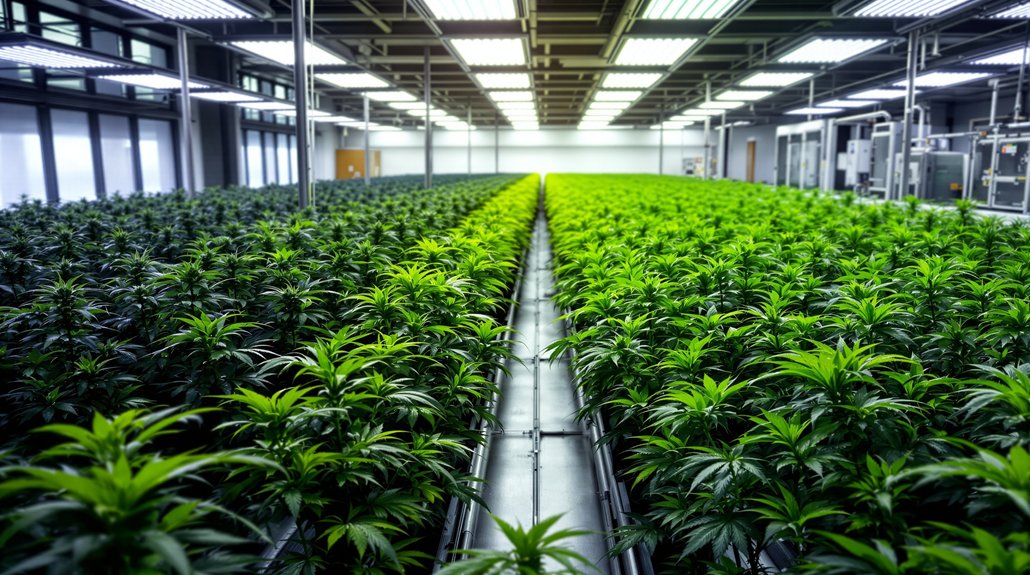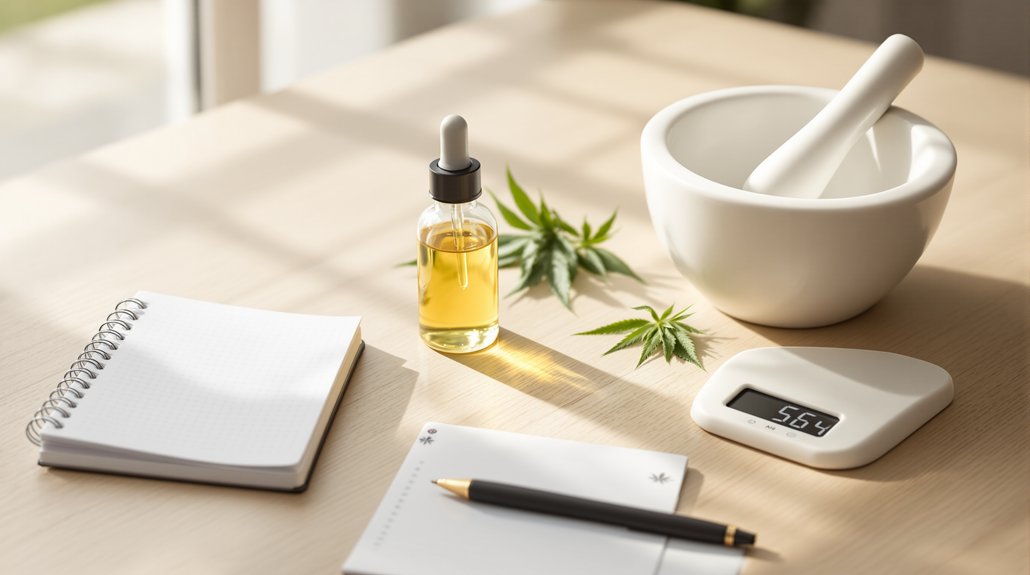Cannabis branding has undergone a radical transformation from tie-dye imagery to sleek minimalism. Premium dispensaries now resemble Apple stores more than head shops, while A-list musicians launch luxury cannabis lines with price points rivaling fine wine. Films like Dallas Buyers Club present cannabis as medicine rather than mischief. This aesthetic revolution extends beyond surface-level prettiness, it’s reshaping billion-dollar market valuations. The question remains: can sophisticated design alone overcome decades of cultural stigma?
From Stereotypes to Sophistication: Cannabis in Modern Cinema
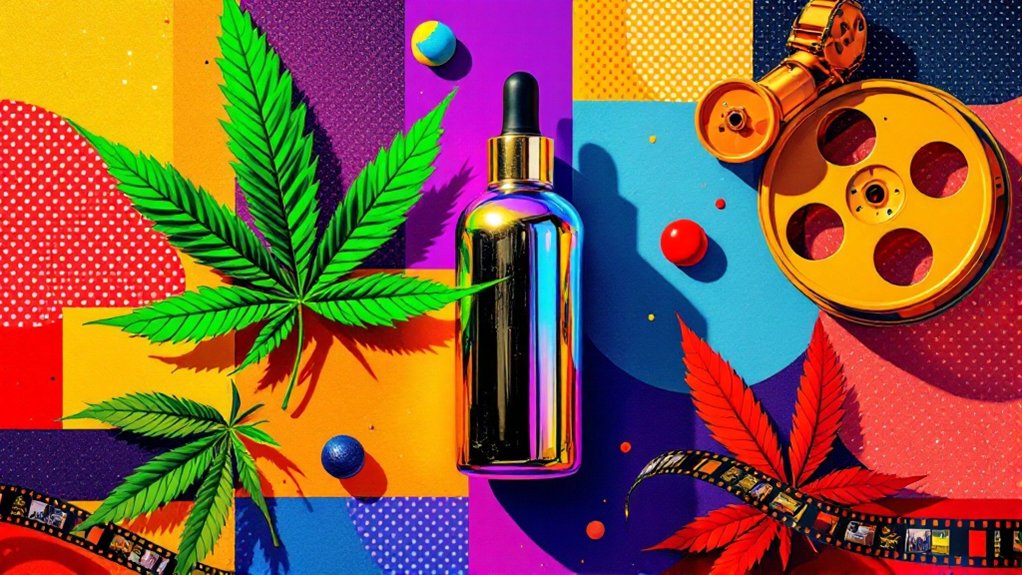
Modern storytelling explores medical applications, as seen in Dallas Buyers Club (2013), while action-comedies like Pineapple Express (2008) blend entertainment with perception-reshaping narratives. Films like Easy Rider (1969) celebrated cannabis rebellion against established social conventions during the counterculture era.
This sophisticated approach influences public attitudes and accelerates legislative reform discussions. Recent documentaries highlight historical injustices and the ongoing fight for cannabis legalization across various jurisdictions.
Celebrity-Driven Luxury: How Musicians Are Redefining Cannabis Culture
How dramatically have hip-hop artists and legendary musicians transformed cannabis from counterculture commodity into premium lifestyle brand? The numbers tell the story. Khalifa Kush dominated 2024 with $50 million in sales, nearly doubling competitors while expanding across ten states.
Cannabis evolved from underground culture to luxury lifestyle through celebrity partnerships, with artist-backed brands generating massive revenue and mainstream appeal.
Jerry Garcia’s posthumous brand pulled in $30 million, proving rock legends still move product. Lil Baby’s empire crossed similar revenue thresholds through aggressive marketing and product diversity.
These artists aren’t just slapping names on packages. Berner’s Cookies revolutionized strain genetics with Gelato, while Garcia Hand Picked curates custom playlists for enhanced consumption experiences. Ice-T’s collaboration with Dime Industries demonstrates how artists create flavor combinations that merge personal identity with cannabis innovation. The hip-hop culture of the 1990s laid groundwork for today’s cannabis branding by introducing terms like chronic that remain influential in modern marketing.
Willie Nelson pioneered limited-edition edibles tied to musical heritage. Method Man’s socially-conscious TICAL brand demonstrates how Wu-Tang Clan members prioritize community impact alongside quality cannabis products. The transformation runs deeper than sales figures, celebrity brands consistently outsell traditional competitors through social media leverage and cultural authenticity, reshaping cannabis into sophisticated lifestyle curation.
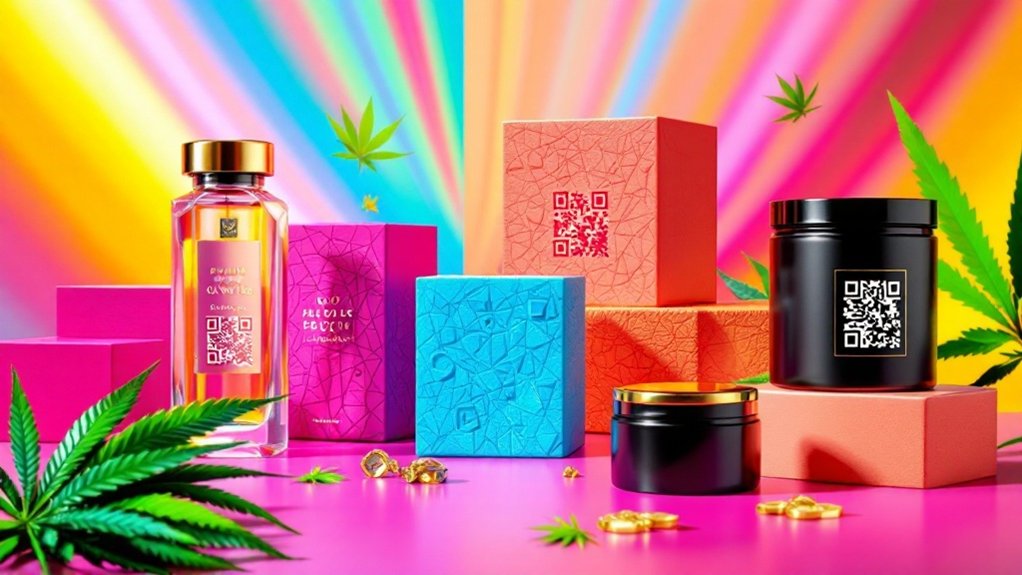
Celebrity brands command premium prices partly because their packaging matches their elevated positioning.
Premium cannabis packaging now employs metallic foils, embossing, and spot UV gloss to signal luxury on dispensary shelves. Glass jars with wood lids create distinctive unboxing experiences that justify higher price points.
Minimalist design dominates wellness segments, utilizing clean typography and black-white palettes with strategic accent colors.
Regulatory information displays clearly while subtle branded elements maintain differentiation without clutter. Child-resistant features ensure compliance with essential safety regulations while maintaining sleek aesthetics.
Custom illustrations and structural packaging tell brand stories, driving consumer engagement and product recall. Some brands incorporate augmented reality features for tech-savvy buyers. Interactive elements like QR codes provide consumers with detailed product information and batch-specific data.
Sustainability has shifted from trend to expectation as 72% of consumers prefer eco-friendly packaging.
Biodegradable materials, hemp plastics, and soy-based inks reinforce environmental positioning while appealing to green-conscious demographics. Shelf life considerations significantly influence packaging choices for different product categories, with baked goods requiring solutions that maximize freshness for their shorter 1-2 week window.
Boutique Dispensaries: Creating Spa-Like Retail Experiences
Across major cannabis markets, boutique dispensaries are ditching sterile clinical aesthetics for spa-inspired retail environments that rival luxury wellness centers. Premium materials like polished wood, marble, and brushed metals create upscale atmospheres that position cannabis as sophisticated lifestyle products.
These spaces prioritize wellness cues through tranquil color palettes, natural textures, and live plants. Modular furniture and display units enable rapid reconfiguration for compliance changes and evolving product lines. This design approach particularly resonates with millennial consumers, who represent nearly half of all cannabis sales.
Wellness-focused design elements and adaptable fixtures allow dispensaries to quickly pivot for regulatory shifts while maintaining therapeutic ambiance.
Scent diffusers neutralize cannabis odors while curated lighting enhances product presentation. Private consultation rooms offer personalized service that mimics high-end boutiques. Interactive displays provide detailed product information, allowing customers to browse at their own pace while maintaining the serene atmosphere.
This design revolution targets affluent, experience-focused consumers who value ambiance alongside product quality. The spa-like approach legitimizes cannabis retail, attracting wellness-oriented demographics while differentiating dispensaries from both competitors and illicit markets through memorable branded experiences. Open-concept layouts promote transparency and customer trust by removing traditional barriers between staff and shoppers.
Visual Identity Revolution: Minimalism Meets Cannabis Branding
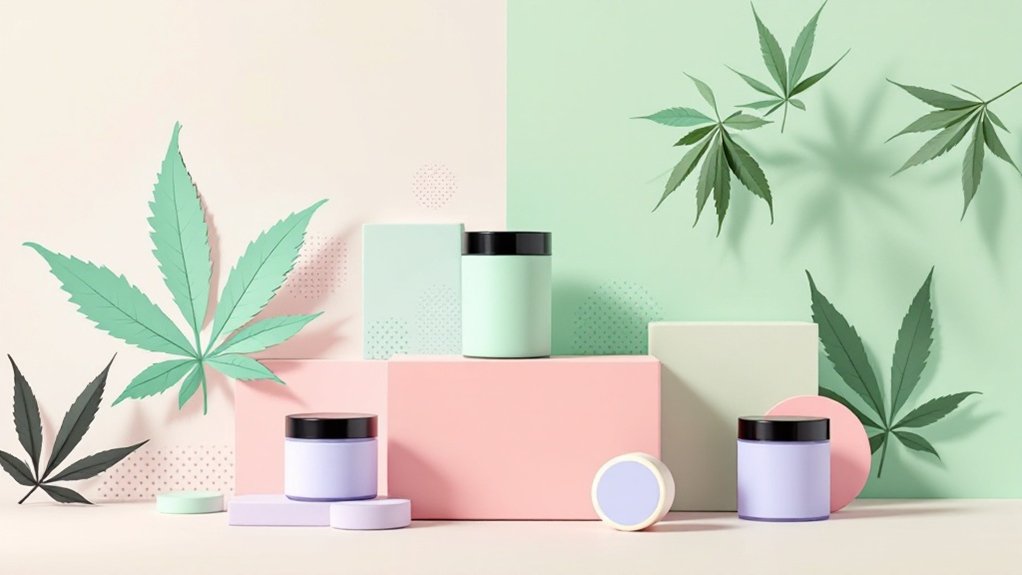
The visual revolution transforming cannabis dispensary spaces extends into packaging and branding, where minimalist design principles are reshaping how products connect with consumers. Clean lines and deliberate whitespace help brands cut through retail shelf noise, while muted color palettes communicate premium quality and natural positioning. Simple typography emphasizes brand recognition at a glance.
This aesthetic shift serves compliance needs perfectly. Minimalist layouts create space for mandatory THC/CBD content and warnings without visual clutter. Brands avoid cartoon themes and bright colors to meet child safety regulations. Custom child-resistant closures integrate seamlessly with sleek presentations.
Sustainability amplifies the minimalist message. Fewer packaging components and eco-friendly substrates like hemp paper align with environmental values. Some innovative containers now serve dual purposes, functioning as planters for succulents after the product is consumed. These simplified designs also reduce production costs through minimal material usage and streamlined manufacturing processes.
Premium finishes within minimalist frameworks transform everyday products into upscale keepsake items, positioning cannabis among sophisticated wellness brands.
Sustainable Elegance: Eco-Friendly Materials in High-End Cannabis
While luxury cannabis brands once relied on petroleum-based plastics and virgin materials, sophisticated manufacturers now embrace eco-friendly alternatives that elevate product presentation without compromising environmental values.
Post-consumer recycled plastics transform discarded bottles into premium jars and tubes, closing the waste loop with style. Hemp-based packaging leverages agricultural byproducts for surprisingly durable containers that decompose naturally.
Cannabis packaging evolves from waste to wonder, turning yesterday’s trash into today’s premium containers while naturally returning to earth.
Advanced materials like bamboo and rice husk create fully compostable packaging lines that look anything but agricultural.
The industry’s nearly one billion single-use plastic items in 2020 drove this green revolution. Oregon’s liquor commission recently approved the first plastic-free recyclable cannabis box, setting regulatory precedent.
Glass packaging now incorporates 56% recycled content, cutting production emissions while maintaining that coveted premium feel. Premium flower and concentrates are commonly stored in glass jars with metal caps that provide both recyclability and reusability.
Innovative biodegradable mylar bags crafted with oxo-biodegradable films offer the same protective qualities as traditional packaging while breaking down completely within two years.
Consumers increasingly choose eco-conscious brands, boosting loyalty and differentiating companies in crowded markets.
The Economics of Aesthetic Appeal: Design-Driven Market Growth
Beyond traditional cultivation metrics, cannabis companies discover that sophisticated design investments directly correlate with explosive market positioning and revenue acceleration. THC Design’s Nevada flower category surge from 51st to 30th place in just two months exemplifies this phenomenon.
The industry’s projected $444.34 billion valuation by 2030 increasingly depends on consumer-facing innovations rather than purely agricultural improvements.
Design-focused hiring reflects this shift dramatically. Cannabis-related design job postings jumped 59% since 2015, outpacing traditional sectors as companies prioritize aesthetic appeal.
Premium branding enables higher revenue per SKU while expanding into mainstream retail channels previously inaccessible to cannabis products. Online cannabis sales growth is driving this transformation, with projections showing 300% growth by 2025 as digital platforms demand superior visual presentation and user experience design.
The recreational segment, where visual differentiation matters most, drives market dominance through enhanced perceived value.
Strategic packaging and branding investments prove essential for capturing the projected $45.35 billion U.S. market by 2025. THC Design’s recent achievement of $100K+ sales in their latest monthly performance demonstrates how design excellence translates directly into revenue milestones.
Cultural Transformation: How Design Is Destigmatizing Cannabis
Cannabis companies across North America are systematically dismantling decades of cultural stigma through strategic design choices that reframe marijuana as a premium lifestyle product. Retailers now create gallery-like spaces with neutral palettes and boutique interiors, effectively erasing “stoner” stereotypes.
These design-forward approaches work, media portrayals increasingly feature diverse, professional consumers rather than outdated criminal archetypes.
The transformation runs deep. Data reveals 14% of users consume cannabis to enhance exercise, obliterating lazy stereotypes. In legalization pioneers like Canada and Uruguay, this shift has been accelerated by comprehensive regulatory frameworks that prioritize public health over criminalization.
Meanwhile, demographic shifts tell the real story: cannabis use among adults 65+ jumped from 4.8% to 7.0% between 2021-2023. High earners and college graduates show the sharpest increases. The U.S. legal cannabis market surpassed $30 billion in 2023, reflecting this cultural acceptance through premium positioning.
Coffee-table books and artist collaborations cement cannabis as mainstream lifestyle branding. Publications like “High on Design” document how creative expressions invite participation from both longtime users and newcomers alike. The result? Cannabis now competes directly with wellness and self-care markets.
Looking for more? Check out our series on The New Cannabis Culture
